
Topics
Guests
- Carey Gillaminvestigative journalist targeted by Monsanto, research director at U.S. Right to Know and the author of Whitewash: The Story of a Weed Killer, Cancer, and the Corruption of Science.
- Gary Ruskinco-founder of U.S. Right to Know.
Explosive new documents reveal the U.S. agribusiness giant Monsanto ran a “fusion center” to surveil and discredit journalists and activists who criticized or wrote damning reports about Monsanto, as well as legendary singer-songwriter Neil Young, who released an album in 2015 called “The Monsanto Years.” Monsanto monitored Young’s Twitter activity and even analyzed the lyrics of his album. The fusion center also surveilled journalist Carey Gillam, who has done extensive research and writing about Monsanto and its popular pesticide Roundup, which has been linked to cancer. The corporation also targeted the nonprofit research group U.S. Right to Know, which submitted Freedom of Information Act requests about the company. From Kansas City, Missouri, we speak to Carey Gillam, a veteran investigative journalist and author of “Whitewash: The Story of a Weed Killer, Cancer, and the Corruption of Science,” and from Berkeley, California, Gary Ruskin, co-founder of U.S. Right to Know.
Transcript
AMY GOODMAN: “Monsanto Years” by Neil Young and Promise of the Real. This is Democracy Now! I’m Amy Goodman. An explosive new report shows documents — in an explosive new report, documents reviewed by The Guardian reveal that the U.S. agribusiness giant Monsanto ran a “fusion center” to surveil and discredit journalists and activists who criticized or wrote damning reports about Monsanto, as well as legendary singer-songwriter Neil Young, who released an album in 2015 called The Monsanto Years. Monsanto monitored Young’s Twitter activity and even analyzed the lyrics of his album.
The so-called fusion center also surveilled journalist Carey Gillam. She was a Reuters reporter who was reporting extensively on Monsanto and its popular pesticide Roundup, which has been linked to cancer. Documents show Monsanto made plans to harass Gillam online, contact her editors at Reuters in the hopes of having her taken off reporting on Monsanto. The corporation also targeted the nonprofit research group U.S. Right to Know, which submitted a Freedom of Information Act request about the company.
For more, we’re joined in Kansas City, Missouri, by Carey Gillam, a veteran investigative journalist and author of Whitewash: The Story of a Weed Killer, Cancer, and the Corruption of Science. And in Berkeley, California, Gary Ruskin is with us, co-founder of U.S. Right to Know — both Monsanto targets.
Carey Gillam, let’s begin with you in Kansas City. Can you explain what happened when you released your book, Whitewash?
CAREY GILLAM: Yeah, I mean, even before Whitewash came out, we know now from the documents that Monsanto was preparing to discredit the book, to discredit me. What we see from the documents that have come out is that the company had a strategic plan, a project action plan, with 20-some different line items and a consulting company in Washington, D.C., and numerous individuals engaged in, you know, covert and secretive strategies to make it look like third parties, for instance, were writing negative book reviews about me. Independent individuals were giving talking points to discredit me and to smear the book. We know from the documents that Monsanto talked about purchasing Google blog postings, search engine optimization, so that if people searched for my name and the book, they would get a host of negative, slanderous information about me. And all of this was done to look like it didn’t come from Monsanto, to look like it was coming from independent third parties — farmers or scientists or others. And we saw that play out. I saw that play out on Amazon, on one weekend, after the book was released, when a whole host of negative book reviews, all at once, with similar talking points, sounding like they came from one person almost, just poured onto Amazon to try to take the book down.
AMY GOODMAN: Democracy Now! invited Monsanto to join us on the show. They declined our request but sent us a statement to read on the air: quote, “None of the documents cherry-picked by plaintiffs’ lawyers and their surrogates contradict the findings of the extensive body of science and conclusions of leading health regulators that glyphosate-based herbicides are safe when used as directed and that glyphosate is not carcinogenic. Instead, they show that Monsanto’s activities were intended to ensure there was a fair, accurate and science-based dialogue about the company and its products in response to significant misinformation, including steps to respond to the publication of a book written by an individual who is a frequent critic of pesticides and GMOs. We take the safety of our products and our reputation very seriously and work to ensure that everyone — from regulators to customers to other stakeholders — has accurate and balanced information to make decisions about our products.” Carey Gillam, if you could respond?
CAREY GILLAM: Sure. I mean, first of all, you know, a frequent critic of GMOs and pesticides, you know, is not really an accurate representation. I’m a journalist. I report accurate information about the risks, as well as the rewards, as well as the benefits. But my book, you know, did lay out a lot of information that Monsanto had wanted to keep hidden. It was based very heavily on documents that I obtained from EPA, USDA and FDA, as well as some internal Monsanto documents. So, you know, the book is very heavily documented and data-driven. Monsanto has not been able to come up with anything that’s inaccurate in the book.
And what Monsanto is actually saying there, you know, they want to talk about fairness and truthfulness and transparency, but what they were doing was actually trying to deceive the public by coming out and engineering all of these secretive things that would look like they were coming from outside the company. You know, if the company has complaints, if the company wants to make a statement about something, they should do it in a truthful way, so that people know it’s coming from Monsanto, and not engage in these secretive strategies.
And what I talk about with this is, it’s not so important, you know, what they were trying to do to me or what they were trying to do to a book. I’m one person. I’m one journalist. But what we know, from a larger trove of documents, is that this is par for the course. You know, this is what they do. They have engaged in smear campaigns against numerous scientists, numerous journalists around the world, and they do it through this third-party strategy so that it looks like it’s coming from a more authentic, more valid, independent source.
AMY GOODMAN: In Oakland, California, Monsanto, in May, was ordered to pay its highest damages yet in the third lawsuit over the popular weed killer Roundup. A jury has ordered Monsanto, which is owned by German pharmaceutical giant Bayer, to pay more than $2 billion in punitive damages to Alva and Alberta Pilliod, a couple who were both diagnosed with non-Hodgkin’s lymphoma cancer after using Roundup on their properties for over 30 years.
Gary Ruskin, that’s Oakland, California. You’re right now in Berkeley. You’re the founder of U.S. Right to Know. Your group was also targeted by Monsanto. Can you respond to what you have been trying to find out, what you understand from these documents, how they targeted you, and why you’re concerned so much about Roundup, why you’ve been raising issues?
GARY RUSKIN: Sure. So, in 2015, we began an investigation of the Monsanto Company and its business practices and its public relations practices. And so I filed a number of Freedom of Information Act requests and tried to understand how they do their business and how they deploy their public relations strategies, and quickly found explosive documents that became a front-page New York Times story about how Monsanto uses and deploys academics in its public relations strategies and how it pays them secretively and there are secret ties. But, essentially, Monsanto creates a choir, by which it deploys its messaging about, that its products are safe.
And so, as these stories got replicated in outlets both in the United States and across the world, apparently Monsanto became very alarmed by them. And so, we now have documents that show they had this elaborate plan, 30 pages long, 11 Monsanto staff, you know, public relations firm, trade groups, all helping out, trying to respond to our little tiny investigation. You know, I run a very small nonprofit. We only have four staff, including Carey Gillam. And yet Monsanto was so threatened by our small effort to conduct an investigation into their public relations work that they generated this elaborate plan to — they said that our investigative effort had the potential to be extremely damaging, that it would impact the entire industry. And so, not too long after that, up springs lots of really kind of — you know, lots of slime and smears about me and about Carey, that spring up all over the internet, as well. And we also found out that there is this Monsanto fusion center, an internal corporate intelligence center, that is tracking, has been tracking our work in some way. We don’t really know very much about its operations. So, that’s what we know from the documents.
AMY GOODMAN: We began this segment with a song of Neil Young from his album The Monsanto Years. Talk about what the documents show about Neil Young, how they were going after him.
GARY RUSKIN: Well, it’s very limited, what we have. We know that the Monsanto intelligence center, the fusion center, was analyzing his social media and his work talking about and singing about Monsanto. It’s pretty sparse. That’s all we know. I mean, really, the documents raise many more questions than they answer about: What exactly is the Monsanto fusion center? What does it do? What practices does it carry out? Who really works for it? You know, what tactics and strategies do we use? There’s a New York Times story about corporate intelligence centers from last year that talk about the use of military-style tactics. The word “fusion center” really comes from a Department of Homeland Security term, “fusion centers.” You know, it’s well known that some of these fusion centers are staffed by former intelligence people. So, what actually happens at the Monsanto fusion center, we don’t really know.
AMY GOODMAN: The website American Council on Science and Health, or [ACSH], has posted articles attempting to discredit our guests, Carey Gillam and Gary Ruskin. One article is titled “Dear Gary Ruskin and Anti-GMOers, Stop Being Puppets for Putin.” Internal Monsanto documents show the company funds the [ACSH]. One document says, in all caps, “You WILL NOT GET A BETTER VALUE FOR YOUR DOLLAR than [ACSH].” Carey Gillam, if you could respond to this? And also, according to The Guardian, Monsanto paid Google — and you talked about this — to promote search results for “Monsanto Glyphosate Carey Gillam” that criticized your work. Explain how this works, how they can pay Google to increase the chance that when I look for your name, I’m going to see something negative.
CAREY GILLAM: Well, I cannot pretend to understand how the algorithms of Google work. But what we do know and what we have seen is that when there is information that Monsanto really wants to promote, or others in the agrochemical industry, you can see this play out on Google search engines. Sometimes it will say, you know, a Google ad off to the left of it. But there are ways to optimize this sort of search engine so that information does rise to the top. And certainly Monsanto has had the resources, the information to do that. And we know that they talk about doing that.
Now, in terms of the other payments, this ACSH group, that I’ve talked about and you mentioned, the American Council on Science and Health, this is one, what we call, front group, one group that we have been able to establish that Monsanto has helped fund, sends money to, secretly. The group is supposed to look like it’s independent and authoritative. They post op-eds all in USA Today, and they have — their people write in Forbes magazine. And what they’re doing is really — you know, they’re paid hit men for Monsanto. And we see that in these internal emails. And it’s really, you know, ingenious on the part of corporations like Monsanto, but what it does is it fools consumers. It’s designed to fool scientists, consumers, lawmakers, anyone who’s really looking for authoritative information and doesn’t understand that this is being funded by special corporate interests.
AMY GOODMAN: Gary Ruskin, you’re calling for the release of all records on this subject. You believe that these documents are just the tip of the iceberg. Are you continuing to be monitored, harassed, targeted?
GARY RUSKIN: Well, we don’t really know, except that we do know that if you search for my name or Carey’s name on the internet, you see a fantastic amount of smears and slime and things that aren’t true. And so, why is that? Where does that come from? You know, the documents that were just released do suggest that Monsanto was carrying out some kind of a campaign to discredit us and to discredit our organization and Carey’s book. And so, the documents are what we know.
AMY GOODMAN: Carey Gillam, will you be suing?
CAREY GILLAM: You know, no. I mean, I have made some inquiries and talked to some legal counsel, and we’ve talked about this. I mean, the publisher of the book would be very concerned, is very concerned, about what Monsanto has done to try to interfere with sales of the book.
AMY GOODMAN: We’re going to have to leave it there, but I thank you both very much for being with us, Carey Gillam, a veteran journalist, author of Whitewash, and Gary Ruskin of U.S. Right to Know. I’m Amy Goodman. This is Democracy Now! Thanks so much for joining us.

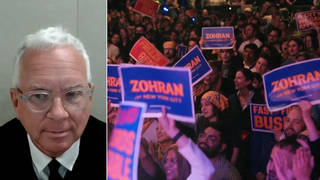
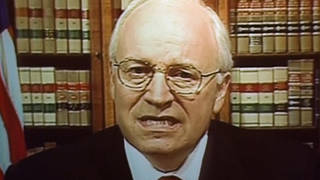
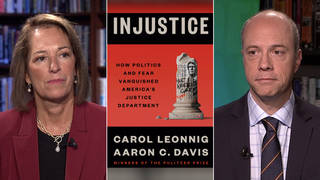
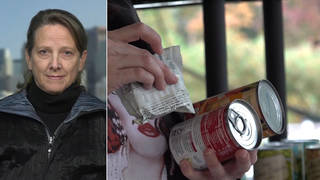






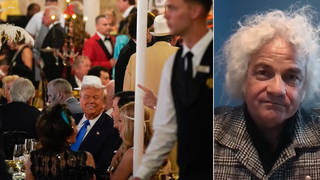
Media Options